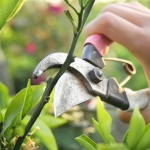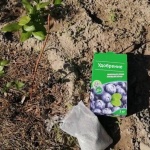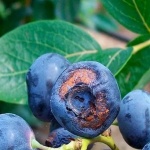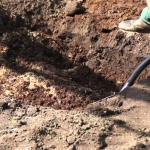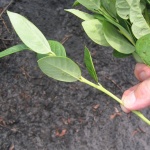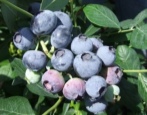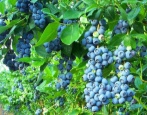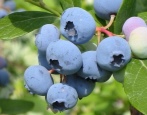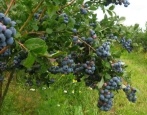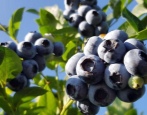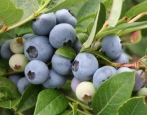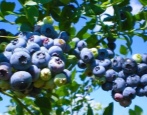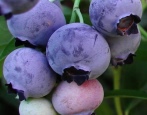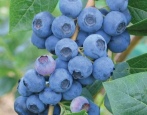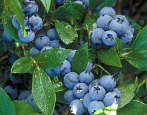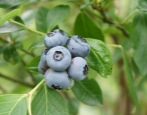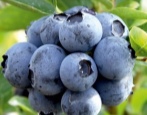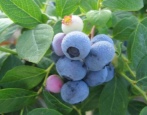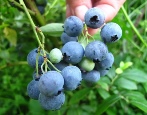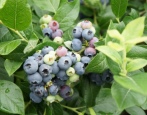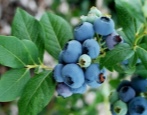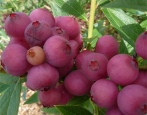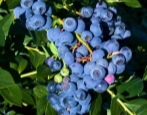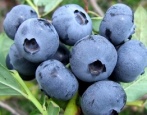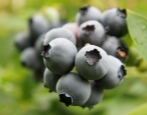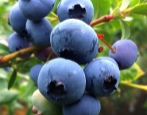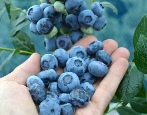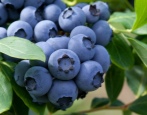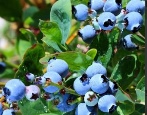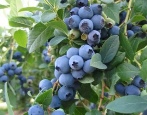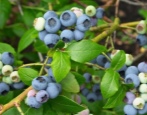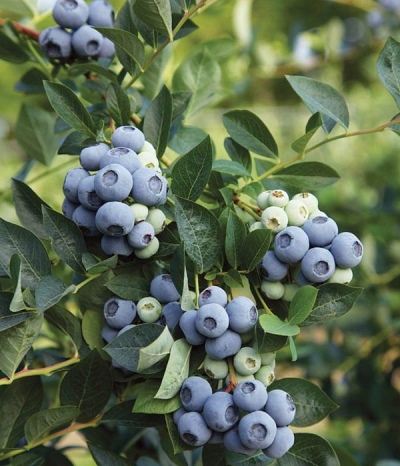
- Authors: New Zealand breeding
- Name synonyms: Vaccinium corymbosum Denis Blu
- Ripening terms: mid-late
- Growth type: tall
- Bush height, m: 1,5-1,7
- Taste: sweet and sour, with hints of acid and sufficient sugar content
- Yield: high
- Average yield: 7 kg per bush
- Fruit size: large
- Fruit shape: rounded
Denis Blue blueberries appeared on Russian territory at the end of the 20th century and became an excellent addition to the rich assortment of berries. It is characterized by good productivity, adaptability to temperate climates (frosty winters and short summers). It is distinguished by its convenience in picking berries with unique taste. The variety is grown throughout the European part of Russia, Siberia and the Urals. A beautiful shrub is used as an element of landscape design due to its scenic beauty throughout the growing season.
Breeding history
Blueberry Denis Blue (Denise Blue) is not a separate variety, but just a transcription variant. This is a worthy representative of the so-called group of New Zealand varieties, appreciated not only in the producing country, but also in neighboring Australia, the United States, Europe and Russia. The source was a wild berry native to North America. The work of breeders has led to the creation of dessert varieties with their high yields, pleasant taste and the possibility of universal use. To breed Denis Blue, a cross-pollination method was used, in which already cultivated blueberries were used. This tactic, combined with growing wild, yielded a new variety with beneficial traits.
Description of the variety
In the group of closely related varieties from North America, it is a relatively low plant, from which it is convenient to pick berries growing on the outside of the branches. The bush reaches 1.5 m in height and needs regular pruning of the central part. There are many reasons for growing this particular blueberry variety:
decorativeness throughout the entire period of growth - abundant flowering, beautiful spherical shape, pointed leaves of bright green color, intense branching;
large berries of a bright blue color with a pinkish tinge during ripening, beautiful, tasty, perfectly tolerating transportation and storage, in demand from the consumer;
versatility of the variety - suitable for fresh eating and processing for the winter;
excellent winter hardiness, the ability to quickly regenerate after return frosts;
unpretentiousness in care (of the shortcomings, only the exactingness to the acidity of the soil is called, but this is easily eliminated with proper agricultural technology).
Connoisseurs and experienced gardeners note the unique taste that surpasses the most famous varieties. To this can be added fast growth, productivity, winter hardiness, decorative, transportability of berries. All together - an undeniable argument in favor of growing this particular variety, with its presentable large berries that can survive for a long time in properly created conditions.
Fruit characteristics
Rounded berries with a pronounced neat scar during the ripening period acquire an intense blue color, and reaching ripeness - a little darker, with a pinkish tint, reaching a weight of 1.8-2.2 g.Presentability and attractiveness are preserved after transportation and storage in correct conditions. This feature makes the variety suitable for commercial cultivation, and for meeting their own needs - eating fresh, harvesting for the winter. The brushes are of medium density, which makes picking easier and allows the berries to grow to a diameter of 1.7-2 cm.
Taste qualities
Spicy, non-trivial, pleasant taste with a unique pronounced aftertaste, mysterious and persistent aroma, moderate sweetness and light sourness - all these features are characteristic of the Denis Blue variety. It is eaten for pleasure, for medicinal purposes (strengthening the immune system, rehabilitation after illness), preparing drinks and compotes, jam, putting it in combined blanks, drying and freezing.
This is a great way to decorate your site at the same time, to make money on the sale of healthy berries with unique properties, or to provide the family with a supply of vitamins and minerals for a long cold season in an inhospitable climate in order to avoid vitamin deficiency.
Ripening and fruiting
The stress on flowering, fruit formation and ripening is well tolerated by the stocky shrub. It is somewhat lower than its illustrious counterparts from the New Zealand group, but this does not affect the yield. In terms of ripening, Denis Blue is classified as medium, but this is an additional plus - when the other species have already been harvested, he has practically no competitors. Amicable ripening allows you to harvest at once from mid-July to the beginning of the last month of summer and quickly implement if breeding is undertaken for profit.
The same circumstance allows you to process the berries, without stretching the culinary process, in a short time.
Yield
Yields can be increased if representatives of other varieties with similar flowering times are placed side by side, although this is a dioecious plant with cross-pollination. The berries appear already for 2-3 years, but they are removed - the quality and quantity are minimal, the plant will only waste its energy. For 4-5 years - the harvest becomes abundant, the fruits acquire a pronounced taste and reach more than 3 kg. The maximum amount - 8 kg, gives a well-developed plant, which is provided with proper care.
Growing regions
Blueberry cultivation can be practiced throughout the European part of Russia, taking some precautions - even in Siberia and the Urals. The plant tolerates frosty winters well, but return colds and late frosts can damage the buds and young, not yet lignified shoots. To prevent such troubles, it is enough to follow the weather forecast and wrap up the shrub during the flowering period.
Its flowering time is at the beginning of June, which makes such a scenario unlikely, but it does not tolerate frosts more than -35 ° C.
Growing and care
Reproduction of blueberries can be carried out by cuttings, dividing the bush and layering, but experienced gardeners are advised to purchase seedlings in a good nursery, at least to start growing a magnificent variety. In spring, the recommended planting time is early May, in autumn - no later than a month before the onset of cold weather. Lowlands or wetlands are perfect for this purpose, otherwise you will have to make sure that the topsoil remains permanently wet. In this case, the space should be ventilated, open, sand, needles, sawdust and peat are added to the soil.
The minimum conditions that allow us to call Denis Blue a variety that is unpretentious in cultivation is the acidity of the soil, timely watering and top dressing at the right time. During the ripening period of berries, the frequency of adding water to the soil is increased so that the berries are fully formed, do not shrivel in the sun.

